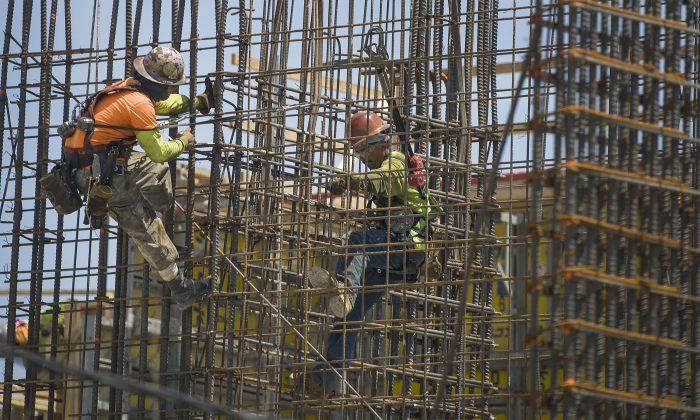May job growth came well below expectations at just above 70,000. The June rebound, on the other hand, handily beat the forecast of 160,000 made by economists in a Reuters poll.
“June’s jobs report smashed expectations, proving once again that President Donald J. Trump’s pro-growth policies are delivering for American workers,” the White House stated in a July 5 release.
The Federal Reserve last month signaled it could ease monetary policy as early as this month, citing low inflation as well as growing risks to the economy from an escalation in trade tensions between Washington and Beijing.
President Donald Trump and Chinese leader Xi Jinping last week agreed to a trade truce and a return to talks.
But the Fed is still expected to go forward with the easing.
“The data are unlikely to stop the Fed from easing at this month’s meeting,” said Jim O‘Sullivan, chief U.S. economist at High Frequency Economics in White Plains, New York. “The well-signaled easing reflects officials’ worries about the potential drag on growth from trade-related ’uncertainties,' along with sub-2 percent inflation.”
Trump on July 5 urged the Fed to lower interest rates, saying it would further boost the economy.
Economy
The economy hummed along at a respectable pace of 3.1 percent in the first quarter, up from 2.2 percent in the last quarter of 2018.The trend in wage growth has slowed from late last year when wages were rising at their fastest rate in a decade, pointing to moderate inflation. Average hourly earnings rose six cents or 0.2 percent in June after gaining 0.3 percent in May. That kept the annual increase in wages at 3.1 percent in June for a second straight month.
Solid job growth over the past year has caught some economists off guard since they considered 4 percent unemployment equivalent to “full employment.”
But the standard unemployment rate only counts people who sought jobs in the past four weeks. When counting people who sought a job at least in the past year as well as people who have part-time jobs but would like full-time ones, the rate jumps to 7.2 percent. That’s up 0.1 point from May, but well below the 8.1 percent in June 2018.
The administration has tried to close the skill gap, urging companies to offer training as part of a “Pledge to America’s Workers” initiative.
So far, more than 200 U.S. firms and associations have committed to provide skills development opportunities for nearly 9 million students and workers.





